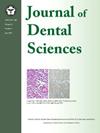Organoid in dentistry: Models for oral biology and disease
IF 3.1
3区 医学
Q1 DENTISTRY, ORAL SURGERY & MEDICINE
引用次数: 0
Abstract
Cell lines and animal models have long been used as essential tools in studies targeting the oral cavity, offering valuable insights into various oral diseases. Each of these research models provides its advantages, such as ease of manipulation in cell lines and the ability to replicate whole–organ interactions in animal models. However, conventional models often have limited native phenotypic features, which do not fully capture the complexity of the human oral cavity. In response to these limitations, organoid technologies have recently been developed and emerged as a promising alternative. Organoids, which are widely applied to mimic the complexity of oral tissues, such as tongue (including taste buds), tooth germs, teeth, salivary glands, periodontal ligament, bone, and oral squamous cell carcinoma, offer a more proper model for studying oral biology and disease. Key signaling pathways, including Wnt/β-catenin, transforming growth factor beta (TGF-β) (bone morphogenetic protein (BMP), and fibroblast growth factor (FGF), have been demonstrated to play important roles in expansion and differentiation of oral organoids. These advancements have opened new avenues for understanding the development and pathology of oral cavity. Therefore, we summarize current novel oral organoid culture strategies and their application, providing a deeper understanding of the biology of the oral cavity and the pathophysiology of oral diseases.
牙科类器官:口腔生物学和疾病的模型
长期以来,细胞系和动物模型一直被用作口腔研究的重要工具,为了解各种口腔疾病提供了宝贵的见解。每一种研究模型都有其优势,比如易于在细胞系中操作,以及在动物模型中复制全器官相互作用的能力。然而,传统模型通常具有有限的原生表型特征,这并不能完全捕捉人类口腔的复杂性。为了应对这些限制,类器官技术最近得到了发展,并作为一种有希望的替代方案出现。类器官被广泛应用于模拟口腔组织的复杂性,如舌(包括味蕾)、牙胚、牙齿、唾液腺、牙周韧带、骨和口腔鳞状细胞癌,为研究口腔生物学和口腔疾病提供了更合适的模型。包括Wnt/β-catenin、转化生长因子β (TGF-β)、骨形态发生蛋白(BMP)和成纤维细胞生长因子(FGF)在内的关键信号通路已被证明在口腔类器官的扩张和分化中发挥重要作用。这些进展为了解口腔的发育和病理开辟了新的途径。因此,我们对目前口腔类器官培养的新策略及其应用进行综述,以期对口腔生物学和口腔疾病的病理生理有更深入的了解。
本文章由计算机程序翻译,如有差异,请以英文原文为准。
求助全文
约1分钟内获得全文
求助全文
来源期刊

Journal of Dental Sciences
医学-牙科与口腔外科
CiteScore
5.10
自引率
14.30%
发文量
348
审稿时长
6 days
期刊介绍:
he Journal of Dental Sciences (JDS), published quarterly, is the official and open access publication of the Association for Dental Sciences of the Republic of China (ADS-ROC). The precedent journal of the JDS is the Chinese Dental Journal (CDJ) which had already been covered by MEDLINE in 1988. As the CDJ continued to prove its importance in the region, the ADS-ROC decided to move to the international community by publishing an English journal. Hence, the birth of the JDS in 2006. The JDS is indexed in the SCI Expanded since 2008. It is also indexed in Scopus, and EMCare, ScienceDirect, SIIC Data Bases.
The topics covered by the JDS include all fields of basic and clinical dentistry. Some manuscripts focusing on the study of certain endemic diseases such as dental caries and periodontal diseases in particular regions of any country as well as oral pre-cancers, oral cancers, and oral submucous fibrosis related to betel nut chewing habit are also considered for publication. Besides, the JDS also publishes articles about the efficacy of a new treatment modality on oral verrucous hyperplasia or early oral squamous cell carcinoma.
 求助内容:
求助内容: 应助结果提醒方式:
应助结果提醒方式:


